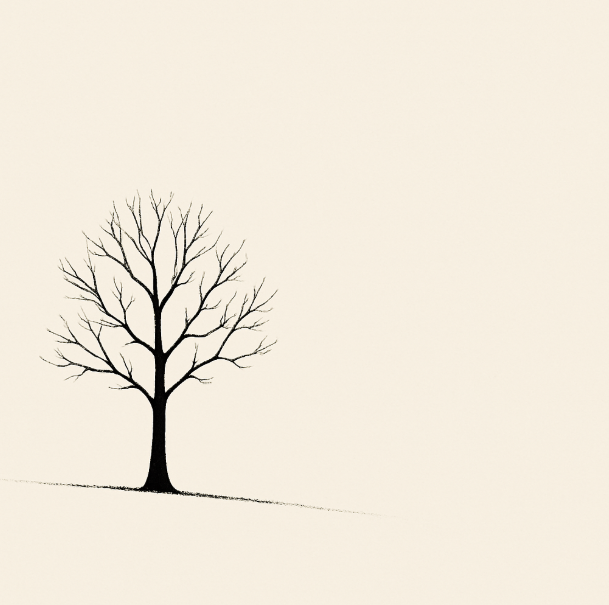or How Leaving Areas “Empty” Can Make a Piece More Powerful
What Is Negative Space?
Negative space refers to the unoccupied or unmarked areas in a composition. In a drawing of a tree, for example, the negative space is not the leaves or the trunk, but the sky and air around and between the branches. In sculpture, it might be the voids that give the form breathing room. In photography, it could be the expanse of sand surrounding a lone figure on a beach.
Positive space (the main subject) and negative space work together. When used intentionally, the empty space can direct the viewer’s gaze, highlight important features, and even evoke emotion.
Why It Matters
- Creates focus: By surrounding a subject with space, you isolate it, making it stand out more clearly.
- Balances the composition: Too many elements can overwhelm the viewer. Negative space offers relief.
- Suggests mood: Large areas of empty space can evoke calm, solitude, or even tension.
- Encourages interpretation: Sometimes the most compelling part of an image is what’s implied rather than shown.
Think of a haiku poem – part of its beauty lies in what is left unsaid. Negative space works in much the same way for the eyes.
Examples Across Art Forms
- Visual arts: Japanese sumi-e ink paintings are masters of negative space, using sparse brush strokes surrounded by untouched paper to suggest entire landscapes.
- Photography: Minimalist shots, such as a single bird against a pale sky, rely heavily on negative space for impact.
- Design: Clever logos often use negative space to create secondary images within the mark.
- Sculpture and architecture: The interplay between solid form and surrounding space can create a sense of openness or confinement.
How to Use Negative Space Intentionally
- Step back and see the whole.It’s easy to focus so closely on your subject that you forget what surrounds it. Step back regularly to see if your composition feels overcrowded or unbalanced.
- Experiment with cropping.Sometimes simply shifting the frame can introduce powerful areas of negative space. In photography, this might mean placing the subject off-centre; in painting, it could mean extending a background.
- Play with contrast.High contrast between the subject and its surrounding space can intensify focus. For example, a bright flower against a deep shadow draws immediate attention.
- Use space to tell a story.Empty space can suggest isolation, peace, anticipation, or grandeur, depending on how it’s used. A lone chair in a vast room feels very different from the same chair in a crowded scene.
- Think beyond the subject’s edges.The shapes formed in the space around your subject are often just as interesting as the subject itself. Try drawing only the negative space to see new forms emerge.
Common Mistakes to Avoid
- Overfilling the frame: Cramming every corner with detail can exhaust the viewer’s eye.
- Accidental negative space: Unplanned empty areas can feel like gaps rather than intentional design choices.
- Ignoring proportion: Too much negative space can make the subject seem lost unless it’s a deliberate choice for dramatic effect.
Quick Exercises
- Silhouette challenge: Choose a simple object and draw only the shape of the space around it.
- One-third rule: Devote one-third of your composition to your subject and two-thirds to space, then reverse it in another version.
- Minimalist photo walk: Capture only scenes with large areas of negative space and one clear focal point.
- Flip and squint: View your work upside down or squint to check whether the space supports or competes with your subject.
Final Thoughts
Negative space is not emptiness – it’s an active, intentional element of your work. When you start to see it not as “what’s missing” but as “what’s framing,” you gain a new level of control over your composition. Whether you’re a painter, photographer, designer, or sculptor, embracing the power of what you leave out can help you create work that breathes, resonates, and lingers in the mind.
In art, as in life, sometimes the most profound moments happen in the pauses.
✍️ Submit a Guest Post
Not a member yet? You can still share your creative voice with our readers. We welcome guest posts from artists, writers, and creative souls of all kinds.
Submit Your ArticleShare this link with your friends if you enjoyed the post 🙂 See the share buttons below to your right


